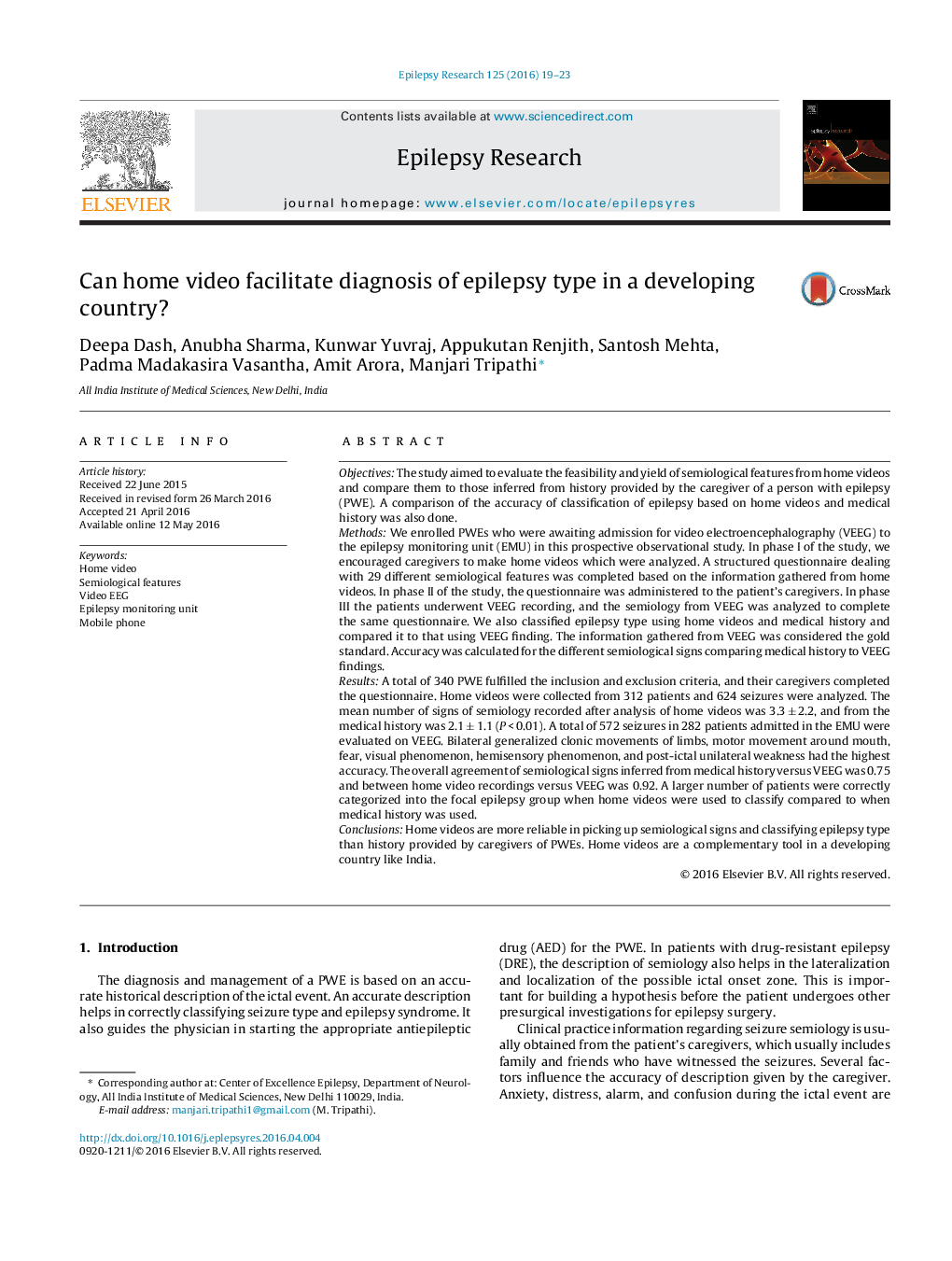| کد مقاله | کد نشریه | سال انتشار | مقاله انگلیسی | نسخه تمام متن |
|---|---|---|---|---|
| 3051903 | 1579898 | 2016 | 5 صفحه PDF | دانلود رایگان |
• Comparison of eliciting phenomenology historically and home videos was done.
• VEEG was considered the gold standard for phenomenology.
• Mean number of signs recorded by home videos was 3.3 and 2.1 from history.
• Inter observer agreement of semiology form medical history versus VEEG was 0.75.
• Inter observer agreement of semiology in home video versus VEEG 0.92.
ObjectivesThe study aimed to evaluate the feasibility and yield of semiological features from home videos and compare them to those inferred from history provided by the caregiver of a person with epilepsy (PWE). A comparison of the accuracy of classification of epilepsy based on home videos and medical history was also done.MethodsWe enrolled PWEs who were awaiting admission for video electroencephalography (VEEG) to the epilepsy monitoring unit (EMU) in this prospective observational study. In phase I of the study, we encouraged caregivers to make home videos which were analyzed. A structured questionnaire dealing with 29 different semiological features was completed based on the information gathered from home videos. In phase II of the study, the questionnaire was administered to the patient’s caregivers. In phase III the patients underwent VEEG recording, and the semiology from VEEG was analyzed to complete the same questionnaire. We also classified epilepsy type using home videos and medical history and compared it to that using VEEG finding. The information gathered from VEEG was considered the gold standard. Accuracy was calculated for the different semiological signs comparing medical history to VEEG findings.ResultsA total of 340 PWE fulfilled the inclusion and exclusion criteria, and their caregivers completed the questionnaire. Home videos were collected from 312 patients and 624 seizures were analyzed. The mean number of signs of semiology recorded after analysis of home videos was 3.3 ± 2.2, and from the medical history was 2.1 ± 1.1 (P < 0.01). A total of 572 seizures in 282 patients admitted in the EMU were evaluated on VEEG. Bilateral generalized clonic movements of limbs, motor movement around mouth, fear, visual phenomenon, hemisensory phenomenon, and post-ictal unilateral weakness had the highest accuracy. The overall agreement of semiological signs inferred from medical history versus VEEG was 0.75 and between home video recordings versus VEEG was 0.92. A larger number of patients were correctly categorized into the focal epilepsy group when home videos were used to classify compared to when medical history was used.ConclusionsHome videos are more reliable in picking up semiological signs and classifying epilepsy type than history provided by caregivers of PWEs. Home videos are a complementary tool in a developing country like India.
Journal: Epilepsy Research - Volume 125, September 2016, Pages 19–23
